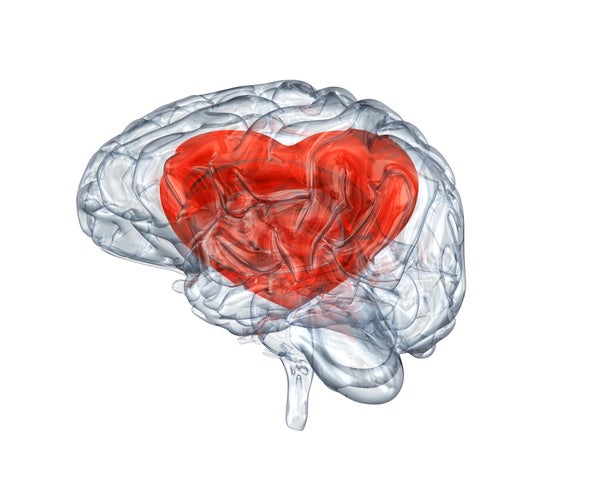What Goes On in Our Brains When We Are in Love?
Romantic love involves a series of complex changes in the brain’s reward system that make us crave the object of our affection

If you have experienced the evolution from having a crush to falling in love, it may seem like the transition happens naturally. But have you ever wondered how we make such a huge emotional leap? In other words, what changes take place in our brains that allow us to fall deeply in love?
Stephanie Cacioppo, a psychologist at the University of Chicago who has studied the neuroscience of romantic love for the past decade, explains that the process involves several complex changes, particularly in the brain’s reward system. More specifically, in a 2012 review of the love research literature Lisa Diamond and Janna Dickenson, psychologists at the University of Utah, found romantic love is most consistently associated with activity in two brain regions—the ventral tegmental area (VTA) and the caudate nucleus. These areas play an essential role in our reward pathway and regulate the “feel good” neurotransmitter dopamine. In other words, during the early stages of love you crave the person because he or she makes you feel so good.
And over time these feelings persist. Our neuroimaging research and that of others suggests that once you are in love—as long as the relationship remains satisfying—simply thinking about your partner not only makes you feel good but can also buffer against pain, stress and other negative feelings.ADVERTISEMENT
Although the early, giddy stages of romantic love may feel different from love that has been nurtured over years, our brains may not necessarily know the difference. In a study led by Bianca Acevedo, now a research scientist at the University of California, Santa Barbara, participants who had been married for an average of 21.4 years and still reported feeling passionate love for each other showed similar activity in dopamine-rich areas, such as the VTA, as those in the early throes of love.
These neural patterns of romantic love seem to be universal across different genders, cultures and sexual orientations. But not all types of love or desire look the same, according to Diamond and Dickenson. Romantic and platonic love, for instance, may come with unique neural signatures. And studies show the neural processes in charge of attraction and sexual desire can occur alongside and sometimes overlap with, but are largely distinct from, those that regulate romantic love.
Still, no study to date has followed the same person over the course of their romantic life to determine whether neural changes do occur over time. Experts are currently attempting to fill these gaps in our understanding. Future research will likely tease apart the brain processes at work, from the first awkward date to years after a couple utters their first “I love you.” Further work will also investigate the underlying neural processes associated with different types of love associated with family, friends, places and things.
This is an Ask the Experts column, please send your question to editors@sciam.com, using the subject line “Ask the Experts.” For other installments click here.
No comments:
Post a Comment